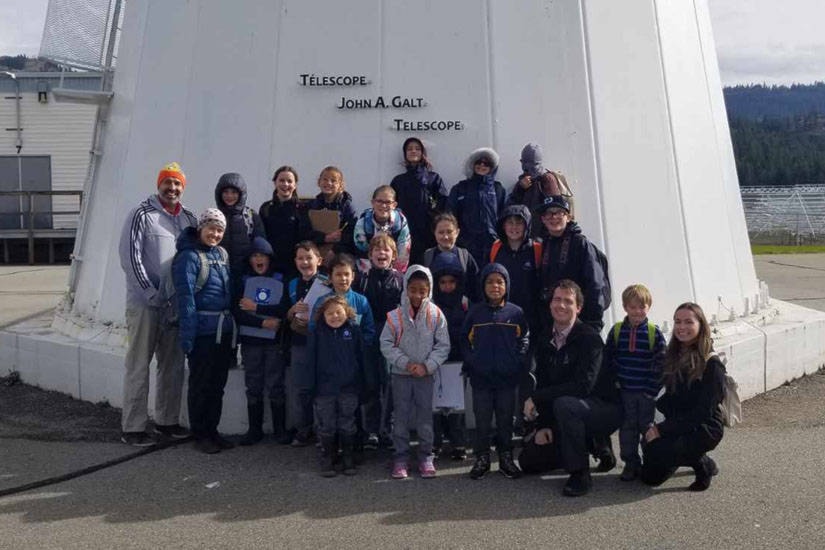Middle school students from the Unisus School recently went on a voyage of discovery to the National Research Council’s Dominion Radio Astrophysical Observatory (DRAO) near White Lake in Kaleden.
Unisus teacher Jason Harris said the field trip on Oct. 18 was part of a multiple-week, educational program called a unit of inquiry, which involves students digging into a central idea, guided by questions.
READ MORE: Learn how a radio telescope in the South Okanagan may unlock mysteries of space
“The field trip was fantastic for the kids because we learned about where we are in time and space. We also really enjoyed taking a field trip because we learned how to communicate, how to ask important questions and how to make informed decisions on the information we received,” he added.
Grade 7 student Summer Rhyason, who said she wants to be an astronomer when she’s older, said it’s important to learn about the telescopes and how they work.
She found the observatory’s CHIME telescope most interesting because it looks into the early days of the universe by tracking radio waves that began traveling to Earth more than 500 billion years ago.
“It’s super amazing because they are mapping the sky without even moving the telescope,” Rhyason added. “I think it is super cool that our school got to drive out here and experience all of the learning and see everything.”
Grade 6 student James Johnston found the high-resolution cameras used to take pictures of the solar system interesting. He said he felt lucky to be able to visit the observatory and see the telescopes up close.
READ MORE: DRAO opens its doors to public
“I think one thing that was very surprising was when they said how far away the closest star is after the sun,” he added. “Because I think it is pretty crazy that it is about four light-years away.”
To report a typo, email: editor@keremeosreview.com.
<>@KeremeosReview
editor@keremeosreview.com
Like us on Facebook and follow us on Twitter.
